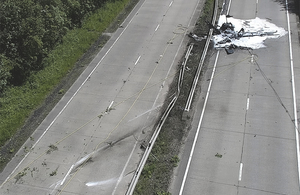- Consumer safety at heart of new government plans to install smart meters in homes and businesses over 4 years
- ambitious future targets for smart meter installations to be set out for energy suppliers, while flexibility given around current targets due to the impact of lockdown restrictions
- smart meters key to UK reducing emissions and instrumental in cutting up to £16 billion off annual cost of delivering net zero emissions by 2050
The UK government today (18 June) set out new plans for the installation of smart meters in households across the country, ensuring that consumers continue to be able to cut their energy bills and carbon emissions as coronavirus lockdown measures are eased.
Installing smart meters could save savvy consumers up to £250 on their bills, while slashing countrywide carbon emissions by 45 million tonnes – the equivalent of taking 26 million cars off the road for a year.
Putting consumer safety first during this pandemic, energy suppliers are being granted an extra 6 months to ensure they have taken all reasonable measures to install smart meters in households and small businesses – making up for the reduced contact they have had with customers. New secondary legislation laid today will see a consultation with industry set strict future annual targets that could result in fines if missed.
Minister for Climate Change, Lord Callanan, said:
Smart meters are playing an important role in helping the UK deliver a cleaner and more efficient energy system, with the added benefit of also saving tens of billions of pounds in the process.
By allowing households to conveniently track their energy use, and prepayment customers to more easily top-up credit, we are working with industry to safely install even more across the country in a way that keeps consumers and suppliers safe.
The rollout of smart meters will represent up to £16 billion annual savings on the cost of reaching net-zero emissions by 2050 thanks to creating a more flexible, cleaner energy system, while small businesses with smart meters collectively save around £1.5 billion each year on their energy bills.
Smart meters are revolutionising the way consumers use electricity, including facilitating cheaper off-peak charging for electric vehicles, as well as boosting household incomes by helping renewable energy generators export green energy to the grid. Thanks to smart tariffs, smart meters have even led to some customers getting paid to use electricity during windy days when there is excess clean energy in the system.
Energy suppliers have been ramping up installations, with 21.5 million smart and advanced meters already in homes and small businesses across Great Britain. This replacement of traditional gas and electricity meters with smart meters is an essential national infrastructure upgrade that is digitising Britain’s energy system, so that it is cleaner, more flexible and saves consumers money. But the onset of the coronavirus crisis led to an inevitable drop in the rate of nationwide smart meter installations.
Since lockdown restrictions started easing, engineers have begun undertaking non-emergency installations of smart meters again in accordance with published guidance on safe working in other people’s homes.
Government and Ofgem ensured that energy suppliers have the flexibility to prioritise essential and emergency metering work and focus on the needs of vulnerable customers. This has enabled them to have the safety, health and wellbeing of their customers and staff as their central priority when installing smart meters in homes.
Ambitious targets for individual suppliers will be agreed later this year following consultation, and will be implemented from July next year.
Until early March, around 19,000 smart meter installations were taking place each day. However, following public health advice in response to COVID-19, government and Ofgem ensured that energy suppliers had the flexibility to curtail smart meter installations, prioritise essential and emergency metering work, and support those in vulnerable circumstances in the communities they serve.
4 out of 5 people with a smart meter say it gives them a better idea of their energy costs and nearly two-thirds of people would recommend one to friends and family. Research conducted by Ipsos MORI on behalf of BEIS also shows that 9 in 10 are satisfied with the installation process.
The Committee on Climate Change have said that without the flexibility enabled by smart meters the cost of reaching net zero could be up to £16 billion a year more expensive than current estimates predict:
CCC Net zero technical report
Read the cost benefit analysis of the smart meter programme.
Read the government response to the Smart meter policy framework post 2020 consultation.
Respond to the Smart meter coordinated consumer engagement consultation – closes 13 August 2020.

